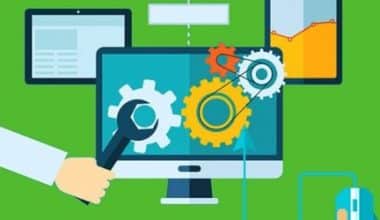Organizational effectiveness assesses how well organizations achieve their objectives. An efficient organization runs smoothly and efficiently. In this post, we will discuss the components required to construct an effective organization. Whether you are a manager or a leader, keep reading to find out how to make your company perform (even) better.
We will begin by defining organizational effectiveness, then discuss seven organizational effectiveness theories, how organizational effectiveness can be measured, and how HR may contribute to organizational effectiveness.
What Is the Definition of Organizational Effectiveness?
Organizational effectiveness relates to how well a company fulfills its objectives. Measuring organizational effectiveness involves various elements, including:
- Employee productivity
- Leadership that is effective
- Corporate Culture
- Efficiency in business processes
Employees, leaders, and processes must all work together to achieve organizational effectiveness. Every aspect of the company functions like a well-oiled machine; if one section suffers, the entire system suffers. Nonprofit organizations are likewise covered by this system.
Nonprofit leaders prioritize offering high-quality services at the lowest possible cost.
Organizational effectiveness in the nonprofit sector necessitates resource cohesiveness, personnel cohesion, and operational efficiency. A comprehensive approach is critical in government settings to properly allocate resources and develop an effective public service delivery system.
Organizational Efficiency vs. Organizational Effectiveness
While both organizational effectiveness and organizational efficiency are concerned with a group’s ability to complete its objective, they adopt significantly different approaches. When a corporation uses the fewest resources, time, and money to achieve its purpose, it is said to be efficient.
Organizational effectiveness, on the other hand, is not time-oriented and instead focuses on attaining a goal by doing the right things. Companies assess these two in different ways. In order to determine organizational effectiveness, they may employ a set of metrics. When it comes to organizational efficiency, they are more prone to look at financial factors like expenses to judge success.
What Is the Importance of Organizational Effectiveness?
Developing a successful organization necessitates attaining organizational effectiveness. Improving your company’s capacity to achieve its objectives is crucial to providing shareholder value. It suggests your company will thrive in the long run.
Maintaining a competitive edge, on the other hand, necessitates the ongoing evaluation of organizational effectiveness and is not something you attain and then forget about. Companies must constantly evaluate the effectiveness of their operations, employee performance, and leadership styles.
When faced with a disturbance, organizational efficiency can make or break the situation. Your organization may address obstacles head-on while focusing on continual expansion. Your company will become more resilient if it commits to organizational effectiveness. This process encompasses all levels of the organization, from senior management to employees.
But how can you build a more efficient organization?
5 Ways to Increase Organizational Effectiveness
You must address organizational effectiveness holistically to achieve a competitive advantage. It is difficult to encourage enterprise-wide collaboration. Employees, leadership, processes, and culture must all collaborate.
Consider each of these regions to be pillars that support a larger edifice. Any weak points endanger the organization’s overall stability.
How can you assure enterprise strength and cohesion? We have compiled five useful ideas for increasing organizational effectiveness.
#1. Establish priorities for people, processes, and resources.
Employees are motivated and productive? Or do they consistently disengage from tasks? Several factors influence performance, including the quality of employee training, the work environment, tools, and successful management.
Employees and leaders are rendered ineffectual in the absence of efficient processes. Fast, lean, and cost-effective operations are required. Employees rely on operational efficiency to complete their tasks. To be effective, employees, management, and processes must all be in sync. According to Gartner, when ’employee goals are linked to both organizational and employee demands, employee performance can increase by up to 22%.’
#2. Align Strategy and Goals
To attain organizational effectiveness, many firms undergo large-scale reforms. However, many organizations fail to improve at the desired rate due to a failure to match strategy with objectives.
You can alter your organization’s value chain to line with your aims once you understand it. Different techniques for restructuring are dependent on specific business models, but the key is to remain flexible.
Could you, for example, improve the client experience through automation? Customers who are tech-savvy frequently favor online automation tools as their preferred mode of connection with a company. A change of this magnitude would necessitate an implementation strategy, change management experience, and executive support.
Balancing all of these moving aspects can be difficult, and organizations frequently fail to address their firm goals throughout the process. Aligning strategy and goals allows your organization to make appropriate organizational structure changes.
#3. Align the Structure of the Company with the Strategy
You can begin integrating company structure with strategy after prioritizing objectives. The structure of an organization has a significant impact on its performance. Is the organization, for example, a top-down, authoritarian hierarchy? Is it democratic, with autonomous teams and individuals?
It is critical to become an effective organization by determining the optimal structure and design for your model. Leadership, management, culture, and other factors all influence how well functions work together. For example, if employees do not adopt new work systems, processes will become stopped.
To engage all levels of the business at the same time, your firm requires an effective structure model. A comprehensive approach is the greatest method to ensure that organizational inefficiencies do not slow the company down.
#4. Evaluate Outcomes
How will you know if your efforts are fruitful? Assessing organizational effectiveness is more complicated than simply looking at revenues. Data analysis can be useful in determining efficiency, but it is also necessary to include the human component of organizational growth.
If you wish to accurately estimate organizational effectiveness, you must ask the following questions:
- What are the objectives of your company?
- Are these objectives communicated to employees clearly?
- How frequently will you assess progress?
Transparency is the most effective strategy to involve people in your efforts to achieve organizational effectiveness. Set out everyone’s tasks and responsibilities, and share the progress of your approach at regular intervals to keep everyone motivated to keep moving forward.
#5. Constantly Improve
Organizational effectiveness is a process that is ongoing. If you want your organization to commit to the process, you must have top-level support. Executive support spreads across an organization, encouraging everyone to support change projects and changes.
The greatest approach to ensure that your organization continues to progress is for executives to make a clear and continuous commitment. Remember to analyze your progress on a regular basis and to always search for opportunities for development.
What Factors Influence Organizational Effectiveness?
Companies might use metrics or review processes to assess their organizational effectiveness. Scorecards are frequently used by businesses to track their performance on a regular basis. How a firm gauges its effectiveness is determined by its strategic plan and the goal it is attempting to attain.
Another technique to assess organizational effectiveness is to examine a company’s leading indicators, such as the number of planned appointments or the number of reference letters issued, to forecast future performance. They can also define KPIs to determine whether or not they completed the required activity.
Models and Approaches to Organizational Effectiveness
The Canadian Center for Science and Education examined four distinct organizational effectiveness theories. This study, which focused on organizational effectiveness in higher education, contained the following components:
- The Goal Approach entails defining effectiveness in terms of organizational goals such as profit, innovation, and profit quality.
- The System Resource Approach describes effectiveness in terms of an organization’s ability to gather required resources.
- The Process method – This method focuses on the efficiency and effectiveness of an organization’s processes.
- The Strategic Constituency Approach – This paradigm defines effectiveness in terms of the interests of stakeholders.
These methods only scratch the surface.
Production, dedication, leadership, and interpersonal relationships are all important.
Dr. P. Venkataiah of Osmania University developed this model, which focuses on critical organizational components such as:
- Production. The movement of organizational output.
- Commitment. How committed employees were to the organization.
- Leadership. Personal power and influence.
The conflict between individuals. Miscommunications between bosses and subordinates.
The overarching idea is clear. Organizational effectiveness is influenced by efficiency, harmony, and effectiveness across a variety of domains. Organizations that are more effective are more profitable, resilient, and competitive.
Adaptive Systems, Decision-Making, Learning, and Group Effectiveness
This model’s effectiveness is dependent on four important conditions.
- Decision-making. How people make decisions, the quality of those decisions, and how to improve decision-making by utilizing more options.
- Learning and change. How do people adapt to new information and patterns of operation?
- The effectiveness of a group. How people collaborate in groups and how they capitalize on new ideas and discoveries.
- Systems that self-organize and adapt. Over time, how systems and processes evolve, self-organize, and improve the organization.
Steps For Leadership in Organizational Effectiveness
Organizational effectiveness depends on leadership, according to The Leadership Circle.
It is specifically dependent on six systems:
- Leadership: Leaders should have the ability to translate vision into strategy, methods, and goals.
- Communication: Communication should be purposeful, consistent, and result-oriented.
- Accountability: Maintaining accountability and discipline necessitates the implementation of systems with actual consequences and realistic rewards.
- Delivery: Among other things, operations must stay aligned with strategy, continuously improve, and build future capabilities.
- Employee productivity: This should also be a rigorous, systematic approach to attracting, developing, and retaining top personnel.
- Measurement: To stay on course, a corporation should employ metrics, reviews, and modifications in a methodical manner.
Utilize Performance Accountability Systems to Engage Employees
Others highlight the importance of people, while the Leadership Circle emphasizes good leadership as the axle around which organizational effectiveness revolves.
Employee motivation is frequently cited as an important factor in efficient organizational performance. Motivation is essential in the job.
Employee motivation influences several other important employee metrics, including:
- Employee efficiency
- Passion for their work
- The levels of output
- willingness to learn and ability to learn
- Survival and retention
- Loyalty to the organization
This is one of the reasons why corporate executives place so much emphasis on employee motivation.
Employee Engagement
How can you increase staff productivity? The employee experience should be prioritized.
Regardless of your approach, improving these areas can assist boost organizational effectiveness.
- The life cycle of an employee. Every encounter an employee has with a brand is covered under the employee life cycle. This cycle begins with pre-recruitment contact and continues through various stages of interaction, such as onboarding and post-exit surveys.
- Employee satisfaction. The employee life cycle is included in the employee experience. However, it can also encompass the office atmosphere, professional development programs, interpersonal interactions, and any other facet of a worker’s experience within the organization, depending on who you ask.
- Career and skill advancement. Human resources has expanded its responsibilities to include change management, employee experience, training, and career development. This shift in responsibilities has also transformed it into a value-added function, rather than merely an administrative or management activity.
- Employee conduct. Individual and team interactions are influenced by employee behavior. Behavior expectations should be clear and goal-oriented. Appropriate workplace behavior boosts team morale, resulting in more efficient, successful, and productive organizations.
How to Evaluate an Organization’s Effectiveness
Monitoring progress is critical for achieving long-term results. However, determining whether your technique is working might be difficult if you do not know where to look. How else may you measure organizational effectiveness besides comparing net profit to desired profit records?
Customer happiness is one of the first things to consider. An effective firm provides its clients with high-quality services. Internal processes have a direct impact on the quality of service provided by a company. If you want to discover how effective your company is, ask your customers.
Another approach for tracking progress is workforce involvement. Are employees participating in new workflows? Are they content with the most recent software? When people perform well, internal processes function more smoothly.
You may estimate the effectiveness of your organizational structure by analyzing employee happiness and performance. Employee and customer happiness are crucial performance metrics that can help you increase organizational effectiveness.
Change Management Promotes Organizational Effectiveness
As we have discussed in this article, organizational effectiveness is all about meeting company objectives. Your organization may need to alter in order to attain its goals. This is where change management comes into play.
Change management entails strategic communication and collaboration with employees to increase motivation. Employee engagement is increased by change managers by sustaining momentum and lowering resistance to change. They encourage and train employees to embrace change.
Change management must begin at the top. According to McKinsey’s analysis on CIO perspectives and driving agile change, “the transformation’s chances of success increase by at least 30% when the top team has a deep understanding of what agility is and how it creates value.”
Keep in mind that your change management approach should be built around the organizational structure. What will your staff think about a transformation initiative? This will decide your approach as well as the ideal management tool and style for your firm.
Summary
Understanding the causes of organizational effectiveness will help you do a better job and help the organization advance in a variety of ways, whether you are in a leadership or operational capacity. Effectiveness, for example, entails securing valuable resources and capabilities, optimizing processes, pleasing stakeholders, and ensuring that the organization meets its objectives. Each of these views can be utilized to assess and improve the organization’s effectiveness, resulting in a well-oiled machine that benefits its employees, stakeholders, shareholders, and the larger community in which it operates.
Related Articles
- EFFECTIVENESS Definition & How to Scale Any Business in 2023
- Top HR Metrics Examples In 2023
- Gross Profit Margin: Formula & How to Calculate the Gross Profit Margin
- CORPORATE STRUCTURE: Meaning and The Different Types
- COMPANY ORGANIZATIONAL CHART: Meaning, Types, and Examples






